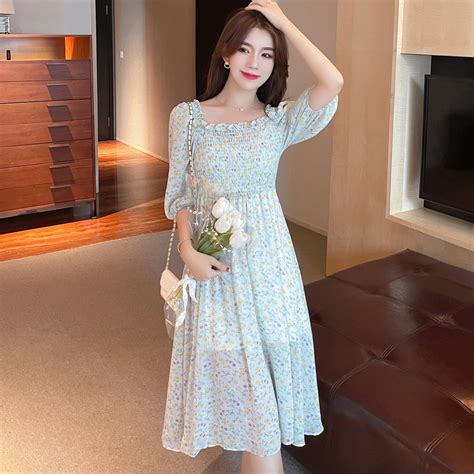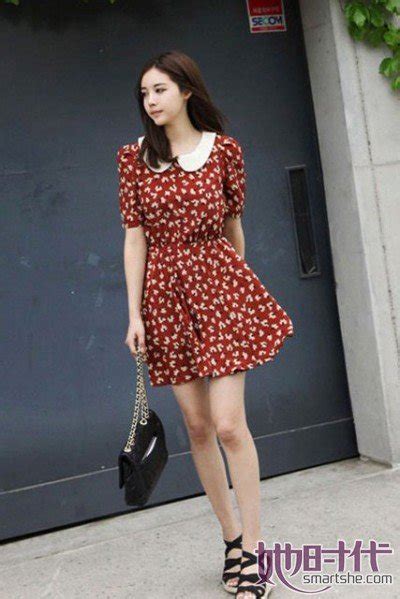
Dresses, a timeless piece of women's wardrobe, have evolved through centuries, reflecting the ever-changing trends and cultures. Whether it's a sophisticated evening gown or a casual summer dress, the versatility of dresses makes them a favorite among fashion enthusiasts. Let's embark on a journey to explore the world of dresses in English, delving into their history, types, styles, and their significance in various cultures.

The Evolution of Dresses
The history of dresses dates back to ancient civilizations, where women wore various forms of tunics and robes. In the West, the ancient Greeks introduced the chiton, a loose-fitting dress worn by both men and women, which later evolved into the peplos, a more sophisticated version worn by women. The Romans adopted and modified Greek designs, creating the toga for men and the stola for women, a long, flowing dress often paired with a veil.
As we move through the centuries, dresses underwent significant transformations. During the Middle Ages, women wore long, fitted dresses called gowns, often adorned with intricate embroidery and lace. The Renaissance period saw a return to more voluminous garments, with elaborate sleeves, collars, and skirts.
The 18th century introduced the iconic gowns of the Baroque and Rococo periods, characterized by their ornate designs, rich fabrics, and elaborate accessories. The Victorian era, named after Queen Victoria, saw a shift towards more structured and conservative dresses, reflecting the moral values of the time.
The 20th century marked a revolutionary period for dresses, with the introduction of new materials, technologies, and styles. The First World War led to a simplification of designs, with women adopting more practical clothing for work and daily activities. The Roaring Twenties embraced flapper dresses, characterized by their short lengths, beaded fringes, and dropped waists.
The post-war years saw the rise of the New Look, introduced by designer Christian Dior, featuring full skirts, cinched waists, and shoulder pads. The 1960s and 1970s brought about a more relaxed and casual approach to dressing, with the mini-dress becoming a symbol of youth culture and rebellion.
Types and Styles of Dresses
Dresses today come in a variety of styles, catering to different occasions and personal preferences. Here are some of the most popular types of dresses:
1. Evening Dresses: These are sophisticated and elegant dresses worn for formal events such as weddings, galas, and award ceremonies. Evening dresses are often made from luxurious fabrics like silk, satin, and chiffon, and feature intricate details such as beading, embroidery, and lace.
2. Cocktail Dresses: Cocktail dresses are shorter and less formal than evening dresses, perfect for semi-formal events like cocktail parties and dinners. They can range from sleek and minimalist to bold and glamorous, depending on the occasion.
3. Day Dresses: Day dresses are casual and versatile, suitable for everyday wear. They can be worn with sneakers for a relaxed look or dressed up with heels and accessories for more formal settings.
4. Maxi Dresses: Maxi dresses are long, flowing dresses that are often worn in warm weather. They are comfortable and stylish, making them a perfect choice for summer.
5. Midi Dresses: Midi dresses fall between the knees and ankles, offering a balance between a mini dress and a maxi dress. They can be dressed up or down, making them versatile for different occasions.
6. Shift Dresses: Shift dresses are straight-cut and loose-fitting, with minimal shaping at the waist. They are simple and elegant, suitable for both casual and dressy occasions.
7. Wrap Dresses: Wrap dresses are characterized by their crossover front, which can be tied or belted at the waist. They are flattering and versatile, suitable for different body types and occasions.
8. Sheath Dresses: Sheath dresses are form-fitting and streamline, often made from stretchy fabrics. They are elegant and sophisticated, making them a great choice for formal events.
Cultural Significance of Dresses
Dresses have always played a significant role in various cultures, reflecting the values, traditions, and identities of different societies. In many traditional societies, dresses are intricately designed and adorned with beads, embroidery, and other decorative elements, serving as a symbol of status and wealth.
In India, traditional sarees and lehengas are worn by women on special occasions such as weddings and festivals. These dresses are rich in color, texture, and design, reflecting the diverse cultures and traditions of the country.
In China, cheongsams, also known as qipaos, are traditional dresses that have been worn by women for centuries. They are characterized by their tight-fitting bodies and high slits, showcasing the wearer's curves and elegance.
In the Middle East, abayas and thobes are traditional dresses worn by women and men respectively. These dresses are often made from luxurious fabrics like silk and velvet, adorned with intricate embroidery and beads.
In Western cultures, dresses have evolved to reflect the changing times and values. From the victorian gowns of the 19th century to the casual dresses of the 21st century, dresses have always been a symbol of fashion and individuality.
The Modern Dress Code
In today's world, the dress code has become more relaxed and inclusive. With the rise of athleisure and casual wear, dresses are no longer confined to special occasions. Many women now wear dresses for everyday activities, pairing them with sneakers, boots, or sandals depending on the occasion.
Dresses have also become a platform for self-expression and creativity. Many designers and fashion enthusiasts now experiment with different fabrics, patterns, and designs to create unique and statement pieces. From bold prints and colors to innovative cuts and styles, the possibilities are endless.
Conclusion
Dresses are a timeless and versatile piece of women's wardrobe. They have evolved through centuries, reflecting the ever-changing trends and cultures. From classic evening gowns to casual summer dresses, the versatility of dresses makes them a favorite among fashion enthusiasts.
In today's world, dresses have become a symbol of self-expression and creativity, allowing women to showcase their individuality and style. Whether you're attending a formal event or just lounging around at home, a dress can add a touch of elegance and sophistication to your look.
So, next time you're shopping for a new outfit, don't overlook the power of a dress. With so many styles and options available, you're sure to find one that speaks to your heart and reflects your personal style.
82.99M小牛网络卫士
21.99M多邻英语app
92.67M神弃之地手游
56.68M无尽之剑3修改版
62.65M小兵冲击
17.58M交警助手最新版
38.27M骑马模拟器手机版
22.14M速享
68.36MTunerLite调音器
1.39M天气预报气象报app
本站所有软件来自互联网,版权归原著所有。如有侵权,敬请来信告知 ,我们将及时删除。 琼ICP备2024021917号-9